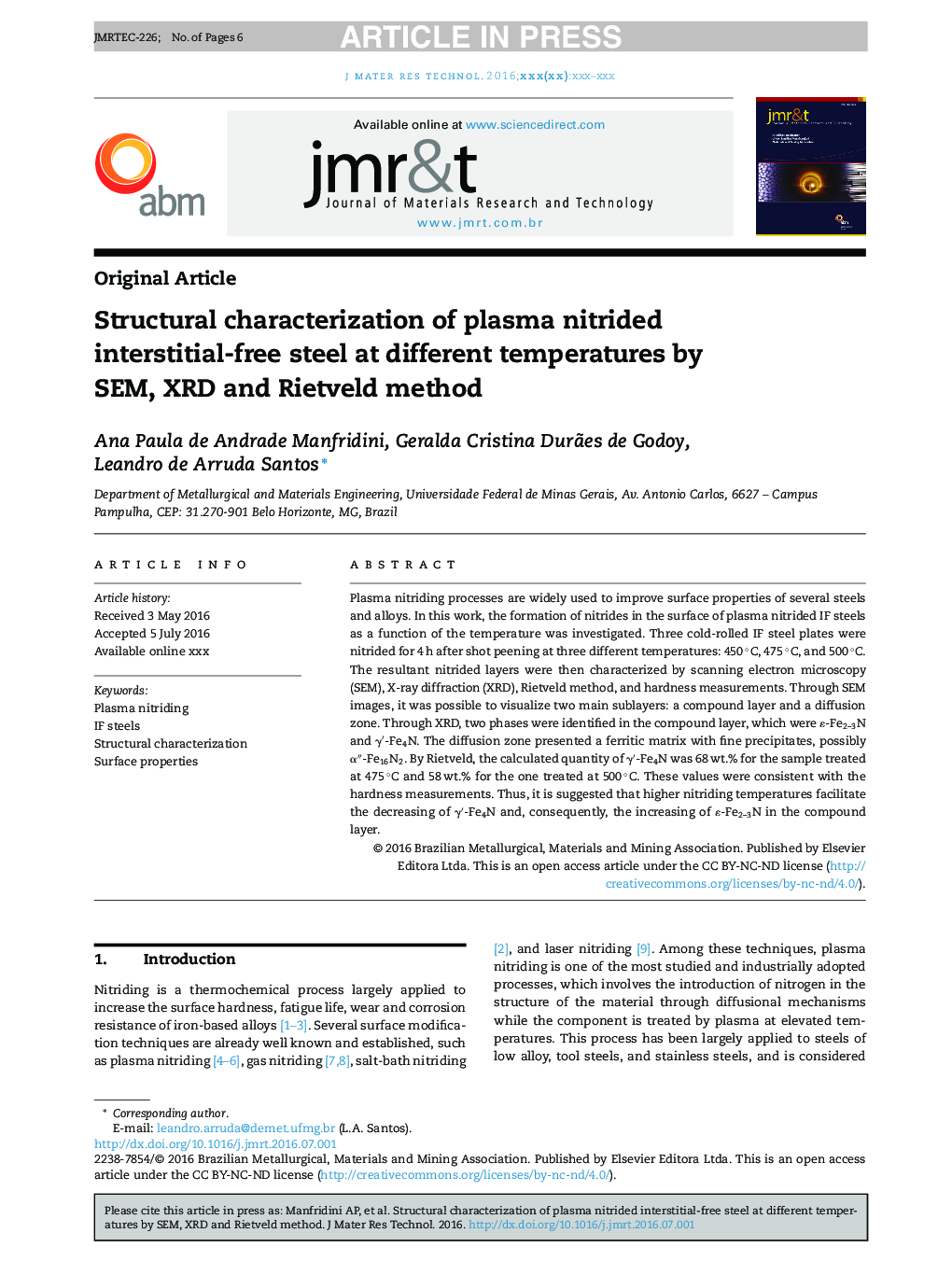| Article ID | Journal | Published Year | Pages | File Type |
|---|---|---|---|---|
| 7899472 | Journal of Materials Research and Technology | 2017 | 6 Pages |
Abstract
Plasma nitriding processes are widely used to improve surface properties of several steels and alloys. In this work, the formation of nitrides in the surface of plasma nitrided IF steels as a function of the temperature was investigated. Three cold-rolled IF steel plates were nitrided for 4 h after shot peening at three different temperatures: 450 °C, 475 °C, and 500 °C. The resultant nitrided layers were then characterized by scanning electron microscopy (SEM), X-ray diffraction (XRD), Rietveld method, and hardness measurements. Through SEM images, it was possible to visualize two main sublayers: a compound layer and a diffusion zone. Through XRD, two phases were identified in the compound layer, which were É-Fe2-3N and γâ²-Fe4N. The diffusion zone presented a ferritic matrix with fine precipitates, possibly αâ³-Fe16N2. By Rietveld, the calculated quantity of γâ²-Fe4N was 68 wt.% for the sample treated at 475 °C and 58 wt.% for the one treated at 500 °C. These values were consistent with the hardness measurements. Thus, it is suggested that higher nitriding temperatures facilitate the decreasing of γâ²-Fe4N and, consequently, the increasing of É-Fe2-3N in the compound layer.
Related Topics
Physical Sciences and Engineering
Materials Science
Ceramics and Composites
Authors
Ana Paula de Andrade Manfridini, Geralda Cristina Durães de Godoy, Leandro de Arruda Santos,
